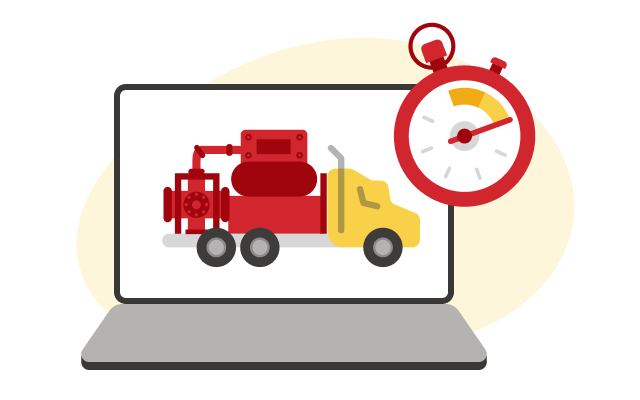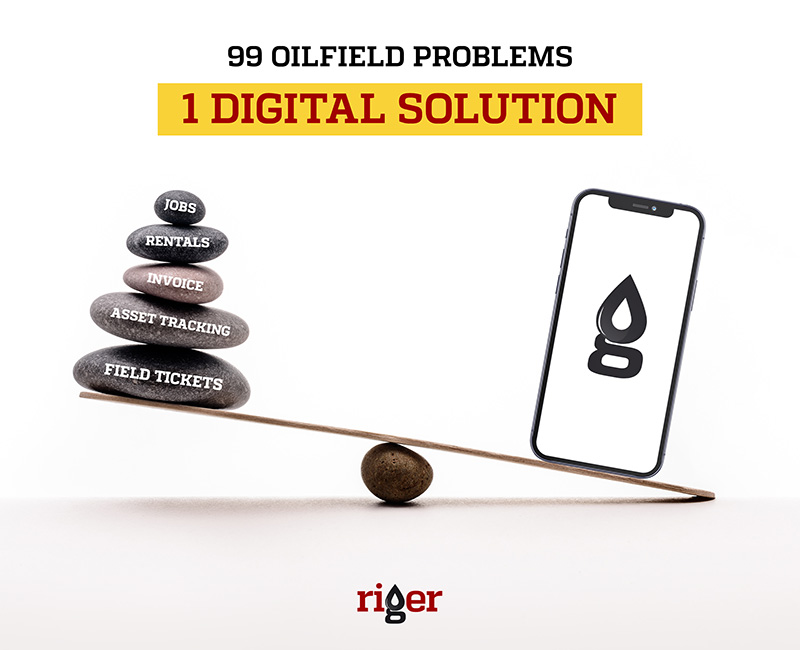There’s always a moment in a growing business where the tools that once held everything together start to lack in their strengths.
It’s never very dramatic at first, maybe a few missed jobs or a lost paper ticket, but when the small cracks begin spreading, they can reveal a deeper-rooted issue in your systems. These systems can no longer support the scale or speed that your operations require.
For many oilfield service companies, that system – whether it be a whiteboard, loads of paperwork, or an excel spreadsheet in the dispatch office, can seem so familiar and tangible, yet constantly becoming more static and manual. By losing the ability to adjust and bend to the environment around you, these systems slowly become more and more risky to rely on.
As the complexity of the oil and gas sector evolves, and each operation requires increasing attention to detail, the need for a better way to coordinate crews, sites, and equipment is higher than ever before. The upgrade to oilfield dispatch software serves as a necessary step for these businesses seeking to stay on their feet and keep moving forward in this unpredictable industry.
Here are five clear signs that your company has fully outgrown the whiteboard, and what you should consider doing next.
1. Dispatching Takes Too Long (and Too Many People)
If scheduling jobs for field crews requires many phone calls, handwritten notes, or chasing you partners down for the latest updates on operations, your dispatching workflow is already holding you back. In smaller sized operations, a whiteboard can be sufficient for all that you’re planning, but as soon as you reach the point where you’re overseeing multiple crews, overlapping job schedules, and sharing equipment in between sites, manual-heavy efforts become a bottleneck.
Oilfield dispatch software
helps in many ways by centralizing your job scheduling into one digital hub, eliminating situations with lost or forgotten data messing up your flow of plans. It enables dispatchers to complete their jobs with a lot more ease as compared to beforehand, being able to assign tasks with a few clicks, update and view schedules in real-time, and view assigned job statuses immediately, without needing to physically walk into the dispatch room or coordinate through numerous spreadsheets and sticky notes.
2. Field Crews Don’t Always Know Where They’re Going
If your crews frequently call in asking for job addresses, equipment requirements, or even client contacts which they were supposed to have had in the first place, your dispatch system is clearly not doing what it is intended to. When plenty of information is siloed on a wall of notes, or buried in a supervisor’s notebook, its that simple for vital information to fall through the cracks.
A digital field crew scheduling software tool allows for job details to be sent directly to technicians’ mobile devices allowing them to work on the go at their assigned sites. Everyone will see the same schedule, same notes, and most importantly, the same expectations from management, so that your company standards can be upheld in day-to-day operations. No more crossed wires or hidden miscommunications that lead to underprepared workers, or unexpected downtime, which will lose your credibility in the face of your own clients.
![image]()
3. Job Conflicts and Equipment Overlaps Keep Happening
If your scheduler’s eyes are the only tool preventing double booking, it might be helpful to think again. Your business is growing just as you want it to, but with that growth will come increased demand, and stacked up jobs. It will soon become merely impossible to manually track everything without issues showing up.
Equipment dispatching software solves this obstacle with its asset tracking capabilities, service statuses, and utilization updates in real-time. If a unit has already been booked, or is in much-needed maintenance, it will not be allowed to be assigned again. Likewise, crew schedules update dynamically to avoid any overlaps or even overworking your employees.
Recurring conflicts are surely a sign of a system that simply cannot keep up with your growth.
4. You Can’t See the Big Picture
Whiteboards show you today, maybe even tomorrow or the coming week. But what about next month? Next year even? Constantly erasing and rewriting schedules to stay current is hardly sustainable to say the least, all while sacrificing long-term plans for short-term scrambling.
Digital job scheduling for oilfield services enables users to zoom out to be able to see the big picture. You can see trends in job volume while finding gaps in crew capacity, and equipment needs. One of the most valuable things for your productivity may be ability to align operators with broader project timelines, letting them see the goals which they are working towards every single day. This kind of visibility emphasizes the need for strategic planning in a business, instead of a simple reactive culture.
When your workers cannot step back to see what they are working towards, where will their motivation go in the long run?
5. You’re Relying on One Person to Hold It All Together
It’s a risky scenario that many businesses find themselves in, when one experienced dispatcher becomes the keeper of knowledge in your team. Only they know exactly which crews work well together, which jobs are naturally going to run longer than expected, and which clients need that little bit of extra care in their service delivery. What happens when that one person is on vacation, or even in the worst case, moves on to pursue something else? An entire set of scheduling operations can come to a stunning halt.
Digital oilfield dispatch systems can be everyone’s experienced dispatcher, making information accessible to your entire team with the click of a button. Being either from your mobile device, or from the office, transparency from within your team will make sure that no late-night texts, or points of failure will slip past your fingertips. Make sure that your dispatch system really acts like a system, and not a dependency.
![image]()
Why Go Digital Now?
The oil and gas sector today faces even tighter standards, much greater competition and pressure to deliver a perfect outcome for clients. Continuing to hold onto manual systems will only set your business back behind your competition, which is why innovation should become your main priority.
Modern dispatch software is designed for complete coordination in your business, connecting dispatch desks with the field, operations with finance, and your plan with real steps you can take to achieve them. As your business grows, the systems you use every day need to scale alongside.
By going digital, you are making sure that your business isn’t holding itself back from being the one you imagine it to be – sustainable and innovative at its core.
You may now think that outgrowing a system is a sign of failure, but it is really a sign of growth. It really becomes a failure when companies grasp onto legacy tools with which they began their journey, ending up with a complex framework built upon a fragile base. These businesses slowly grow dependent on memory, manual labour, and fragile human routine.
When businesses recognize these errors early, they can set themselves up for the long run with scalable and reliable solutions that will last against the constant changes that the oil and gas industry experiences year over year.
Technology isn’t going to solve every problem, but when this problem is outdated workflows holding back field teams, modern tools can make just the right difference.

